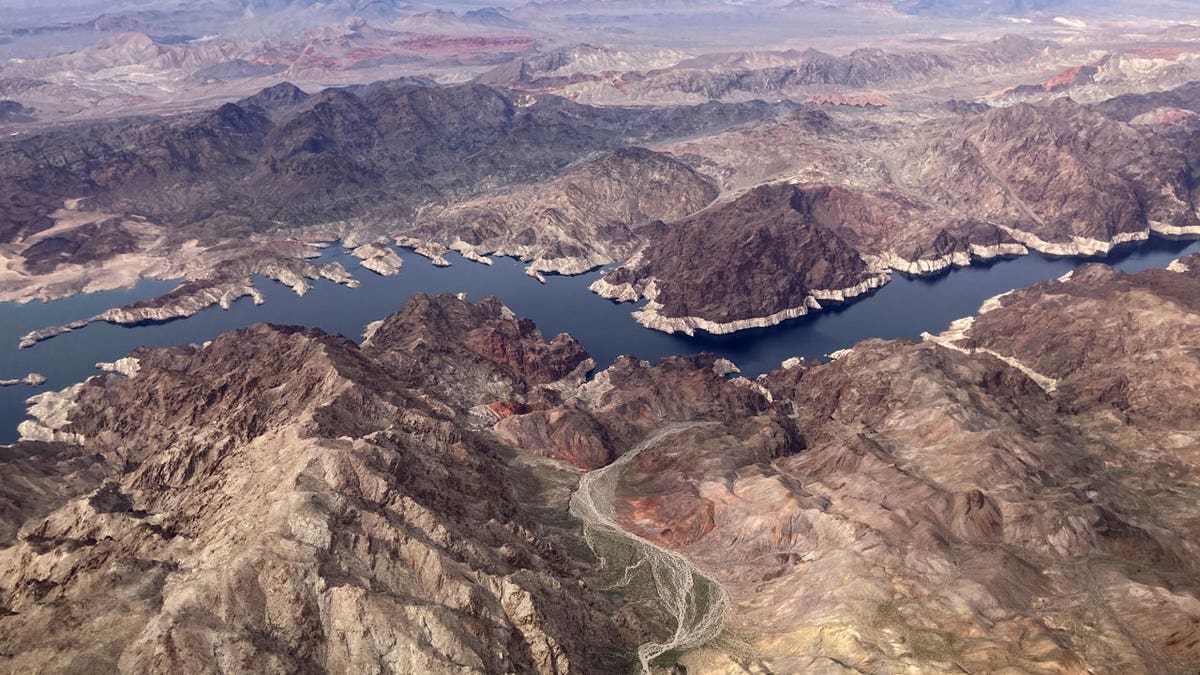The Biden administration took action Wednesday for a historic agreement among Western states to conserve vital water supplies.
The Department of the Interior (DOI), which has for months worked with state leaders on developing water conservation plans, issued a draft supplemental environmental impact statement (SEIS) laying out two potential options: a no-action alternative and the proposed action to substantially restrict supplies in coming years.
The proposal is designed to protect the Colorado River System and two key dams in response to falling water levels.
"Today, the Biden-Harris administration is taking another key action to bolster water resilience in the Basin States, leveraging historic investments from the president’s Investing in America agenda to build a more sustainable and equitable future for communities across the West," said White House National Climate Advisor Ali Zaidi.
BEIJING-BACKED GREEN ENERGY FIRM IS EXPANDING IN US, POSING SERIOUS NATIONAL SECURITY RISK: REPORT

Ali Zaidi, White House national climate advisor, listens during a news conference at the White House Dec. 16, 2021. (Al Drago/Bloomberg via Getty Images)
"The Colorado River Basin’s reservoirs, including its two largest storage reservoirs Lake Powell and Lake Mead, remain at historically low levels. Today’s advancement protects the system in the near term while we continue to develop long-term, sustainable plans to combat the climate-driven realities facing the Basin," added DOI Bureau of Reclamation Commissioner Camille Calimlim Touton.
The draft SEIS published Wednesday rescinds two previous potential plans for Colorado River conservation that the DOI issued in April and replaces them with the proposed action derived from an agreement reached in May by the so-called Lower Basin states of Arizona, California and Nevada. The no-action alternative would maintain the status quo approach to conservation.
The May agreement would ensure that at least 3 million acre-feet, or 978 billion gallons, of Colorado River water supplies — which feed the massive California agriculture industry and major jurisdictions like Phoenix — are conserved by 2027. Under that plan, at least half of that amount will be conserved by 2025.
The DOI said 2.3 million acre-feet of the conserved water under the proposal would be funded through the Inflation Reduction Act, the Democratic climate and tax legislation President Biden signed last year. The remaining 0.7 million acre-feet would be made via voluntary, uncompensated reductions by the three Lower Basin states.
HOUSE CCP PANEL PROBES BIDEN ADMIN OVER CHINESE GREEN ENERGY PROJECT ON US SOIL
"Throughout the past year, our partners in the seven Basin states have demonstrated leadership and unity of purpose in helping achieve the substantial water conservation necessary to sustain the Colorado River System through 2026," Deputy Interior Secretary Tommy Beaudreau said in a statement Wednesday.
"Thanks to their efforts and historic funding from President Biden’s Investing in America agenda, we have staved off the immediate possibility of the system’s reservoirs from falling to critically low elevations that would threaten water deliveries and power production."

A bathtub ring shows where the water level on Lake Mead once was along the border of Nevada and Arizona March 6 near Boulder City, Nev. (AP Photo/John Locher, File)
While Upper Basin states of Colorado, New Mexico, Utah and Wyoming mainly receive water from smaller rivers that branch off the Colorado River, the Lower Basin states largely receive water pooled in Lake Powell, a manmade reservoir along the Utah-Arizona border, and Lake Mead, a reservoir along the Nevada-Arizona border.
The federally-managed Glen Canyon Dam in northern Arizona and Hoover Dam in southern Nevada are able to control water flows from the respective reservoirs to the Lower Basin states.
CLICK HERE TO GET THE FOX NEWS APP
As a result of decades of drought, both Lake Powell and Lake Mead have dropped to lower levels, nearing so-called dead pool levels when water is unable to flow from a reservoir through its dam, threatening vital water supplies and hydropower-generated electricity for tens of millions of Americans.
According to federal data, Lake Powell's level has dropped to about 3,572 feet and Lake Mead's level has dropped to 1,065 feet. The two reservoir's respective dead pool levels are estimated to be 3,370 feet and 895 feet, respectively.
Thomas Catenacci is a politics writer for Fox News Digital.


